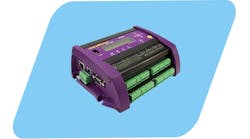I had the pleasure to sit down with the Institute for Electrical and Electronics Engineers (IEEE) Power Quality Subcommittee Chair and Stray Voltage Chair Matthew Norwalk, CPQ. I found it interesting how his career path opened up the opportunity to become a contributor and leader of IEEE guidelines and standards.
Norwalk began his career as a warehouse attendant for an electrical contractor. Enjoying the job, he joined the IBEW electrician apprenticeship program. Since becoming a journeyman in 2000 and working in many different industries honing his troubleshooting skills (including a stint as a foreman in the technical services department), he transitioned to specializing in power quality with Southern California Edison. He now serves as senior advisor and interim engineering manager for the utility’s power quality department.
When asked how he became interested in power quality, he replied, “Interestingly, I had an apprenticeship instructor who brought in a power quality meter. It was the first time seeing a sine wave and seeing an FFT show the harmonics within a sine wave. He showed us the difference between an electronic load and a resistive load. That was fascinating to me, so that was my first exposure to an impromptu power quality module.”
Norwalk became involved with IEEE in 2011 at the General Meeting. He said he “went into the stray voltage working group and started as an observer…academic members of the working group didn't have the hands-on experience. They weren't out there taking measurements. The work that I had done as an electrician all those years before coming to Edison could be quite helpful to the development of this guide.”
Norwalk has been involved in contributing to many IEEE standards and guidelines, such as stray voltage, flicker, harmonics, monitoring, and identity and improving voltage quality — to name a few. He went on to say, “I provided contributions to standards in small ways. Maybe it was one paragraph, or maybe it was going through the document and just providing revisions. That automatically puts you in the track to be vicechair, secretary, and then eventually chair.”
This interview is meant to encourage electricians to become more involved with the industry. Your NEC knowledge and practical theory application allow you to partner with the academic and practical engineers to form meaningful standards. It doesn’t take much to make a big difference. Electricians are needed to help balance out the standards, helping the committees better understand the practical application in the field.



